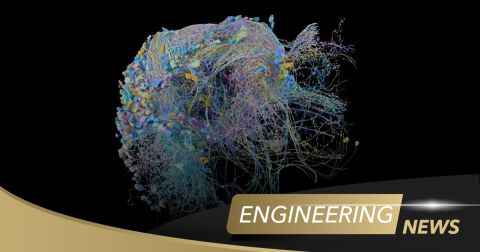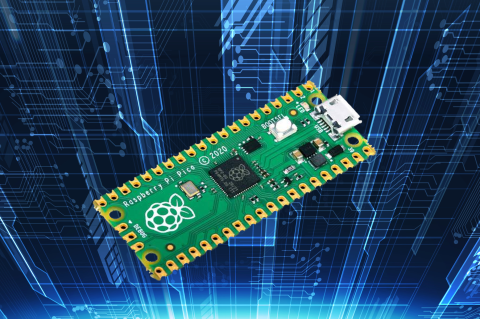DOE Releases Roadmap for Quantum Networking and Quantum Internet

Quantum computers need to interface with each other, just like any other group of classical computers. Just like we have a classical internet with classical communications channels, we’ll eventually have quantum analogues of LANs, WANs, and an entire quantum internet. Quantum computers are already mysterious enough, and scalable fabrication of a single quantum architecture out to VLSI territory is still a major obstacle to creating commercial quantum products.
Now that a research project funded by the U.S. Army has successfully integrated 128 qubits onto a photonic chip, we’re moving closer to scalable quantum architecture that can enable applications like quantum networking. This is obviously a bit short of the millions or billions of qubits we’d hope to see in VLSI scale quantum components, but it’s an important first step to commercializing quantum components for use in larger quantum networks.
Then there is the structure of a quantum network itself. Just last month, the U.S. Department of Energy (DOE) announced its blueprint for a quantum internet. The DOE, academics, and public-private partnerships for commercializing quantum technologies all agree: we’ll have some form of quantum networking or a small-scale quantum internet by the time quantum technologies are being commercialized for use at the consumer level. Let’s look at what this might look like and some opportunities for engineers going forward.
Far-Reaching Information Transmission
China has been setting some distance records for transmitting entangled states since 2017, while the US and Europe have focused more on enabling industry through standardized hardware. Now something more practical, forming connections between quantum computers directly in the field, has been the focus in the U.S. and Europe. Rather than confining transmission over 50 km of fiber in the lab, researchers at Argonne National Laboratory recently demonstrated transmission of entangled states in February 2020. Two entangled photons were transmitted over a 52 mile fiber optic channel deployed in the Chicago suburbs and successfully read at the receiving end.

This crucial development shows that existing fiber architecture can be used to successfully transmit quantum information. It’s a major step forward in quantum networking as it shows the existing telecom architecture can be used to build large-scale quantum networks, including a quantum internet. Since existing fiber can clearly be part of a new quantum internet, the challenges now lie at the Rx and Tx ends of a fiber channel for integrating separate quantum systems into a larger network.
What Quantum Networking Looks Like
What makes quantum networking different is not the topology or fundamental concepts used to build networks. Any concept in classical networking has a quantum analogue. Instead, a quantum network looks something like the diagram below. A prototypical quantum network with classical control elements was proposed in the DOE’s blueprint. Today, the components needed to implement this type of network are not standardized or mass-produced; everything is customized and cobbled together from a range of components to enable quantum communication in this manner.
This type of architecture still relies on fiber for signal transmission across a quantum network. More specifically, radio-over-fiber can be used to transmit the microwave signals needed to query qubits at the Rx end of a link. This technique is already becoming part of 5G front and backhaul applications, and it becomes possible to interface an end device with a quantum network using such an architecture.

Currently, we don’t have a “quantum switch” of the type shown above for interfacing between different portions of a quantum network. Today, if you want to access a quantum computer from outside the lab, you need to access it through a cloud services provided by Amazon Braket, IBM, and soon Honeywell.
Expanding quantum networking so that it stands on its own takes a number of advances in telecom architecture and quantum components. Ultimately, these advances will filter down to the PCB level in order to integrate different components into a larger system.
What Happens at the Board Level?
After quantum information travels over a long channel, it needs to be processed by some device at the Rx end of the channel. The components needed for this will eventually be miniaturized to some extent and integrated onto the board level, but what this looks like is still the stuff of imagination. It will be interesting to see how board designers cope with the need for superconducting channels and/or optical channels to support quantum computers and components.
Currently, the PCB manufacturing industry is not prepared to accommodate these technologies at scale as the quantum computing industry still needs to standardize how information will be transferred between components on the board. For photonic quantum components, chip-to-chip connections may rely on embedded optical interconnects to transport photons between different chips. We may come to a situation where everything needs to be fabricated on chiplets, which shifts the design burden back to IC designers; it is still unclear how much integration will be required at the board-level vs. chip-level to help commercialize components for quantum networking.
Quantum computing is not a pipe dream like blockchain and cryptocurrency, it’s something that governments and private companies see as a way to stay more competitive, both on corporate and national security terms. With this in mind, public-private consortia have come together in the U.S. and Europe to help commercialize these technologies. Europe’s Quantum Internet Alliance and the Quantum Economic Development Consortium (QED-C) are working to standardize quantum components, quantum networking protocols, and much more related to quantum technologies.
Whether you want to design the next most powerful quantum computer of 2020 or you’re innovating in any other area of electronics, the design tools in Altium Designer® help you design powerful new technology. Designers and layout engineers will have access to a complete set of tools for designing PCBs for any application. In the realm of quantum computing, this encompasses everything from refrigeration to control systems and microwave systems.
Now you can download a free trial of Altium Designer and learn more about the industry’s best layout, simulation, and production planning tools. Talk to an Altium expert today to learn more.











